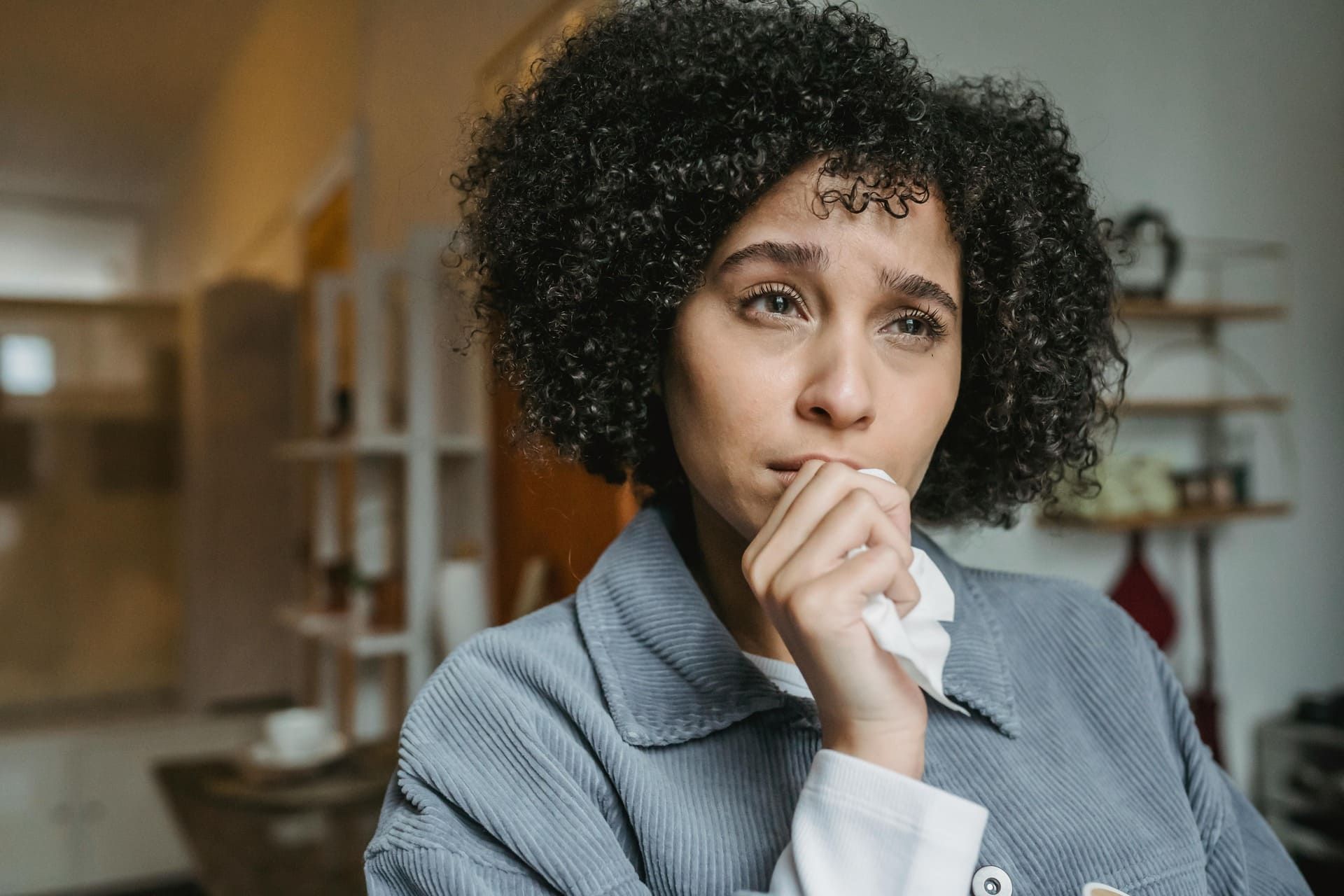Emotional Tears: Why We Cry and Why It Matters

Sarah Johnson, MD

Have you ever felt tears slipping down after a long, exhausting day, when emotions are too strong for words? These emotional tears appear when gratitude, relief, or stress overwhelm you. They are not a sign of defeat but a natural response of your body and spirit working together. Emotional tears help release tension, soothe your nervous system, and process intense feelings that words can’t capture. Crying is your body's natural way to release stress and self-soothe. Discover how Mental Health AI can support your emotional well-being.
Emotional tears differ from basal tears, which lubricate the eyes, and reflex tears, triggered by irritants like onions. They carry stress hormones like cortisol and natural pain-relievers such as leucine-enkephalin. Crying releases built-up tension, making you feel lighter. Scientists also note that emotional tears trigger oxytocin and endorphins, promoting calm and connection. These tears and emotions are your body’s way of self-soothing and processing complex feelings.
better with Soula

Support for every woman:
✅ A Personalized Plan to reduce anxiety and overthinking
✅ 24/7 Emotional Support whenever you need it Cycle-Aligned Mental Health Tracking — monitor your mood and symptoms in sync with your period
✅ Real-Time Insights into your energy levels and emotional state
✅ Bite-Sized Exercises to help you return to a calm, balanced state — anytime, anywhere
What Are Emotional Tears?
When strong emotions such as sorrow, joy, frustration, or empathy strike, your body produces emotional tears. Unlike basal tears or reflex tears, these are triggered by the limbic system, especially the hypothalamus. Emotional tears contain higher levels of stress hormones and natural opioids like leucine-enkephalin, which help calm the nervous system and promote emotional regulation. This is why crying supports stress management and overall mental health. Allowing yourself a healthy emotional release through tears can be far more restorative than suppression, which often prolongs pain.
Scholars propose that emotional tears serve both bodily and social ends. From an evolutionary standpoint, the act of crying may have emerged as a silent plea for assistance—a way for members of a tribe to nonverbally disclose vulnerability and thus strengthen bonds of reciprocity. Since human survival hinges on cooperative networks, strengthening these networks could confer a survival advantage. Concurrently, some psychologists suggest that visible tears externalize private emotional states, making it possible for the individual and observers alike to acknowledge and process feelings of grief, anxiety, or exuberance more effectively.
When and Why We Cry
Everyday relatable examples:
Everyone experiences spontaneous tears—they’re part of being human. A tearful farewell at the airport, overwhelming frustration after a stressful day, or the emotional high of a touching song or movie scene all show how emotional tears express what words cannot. These spontaneous tears are a natural form of stress-related crying, offering a physical release when emotional pressure becomes overwhelming.
Some tears can't be easily labeled. For example, "happy tears" come when you see someone you love again after being apart for months. They aren't just sad or happy; they're a huge wave of both. This shows that emotions don't fit into neat boxes. Tears of thankfulness or relief, like finally reaching a long-held goal, have a weight that needs to be let go. These times show us something true: crying isn't just about pain; it's also about meaning. Tears are the end of an unspoken sentence when something really moves us.
And then there are the quiet, private tears that come after a long day in the shower or when you're alone in your car and finally let go. These tears aren't over the top; they are needed. They're how the body deals with things that the mind can't yet put into words. Every tear, whether shared or alone, tells a story. The next time you feel them coming, remember that they don't mean you're losing control; they mean you're alive to the beauty and pain of the world. Honoring the urge to cry is one of the most compassionate emotional release techniques, signaling not weakness but profound self-awareness.
What Emotional Tears Can Teach You?
Crying is a healthy way to manage emotions, not a loss of control. During crying, the body releases stress hormones and activates the parasympathetic nervous system, helping you relax. Paying attention to the feelings behind your tears—anger, sadness, relief—enhances stress management and self-awareness. Emotional tears allow you to process emotions without self-judgment and support overall mental health.
Reflective journaling can help you figure out what the tears meant after you cried. Write down what made you feel that way, where you felt it in your body, and what you needed at that time. You might notice patterns, like when you cry when you're tired or when someone crosses a line. And if you suddenly start crying (at a meeting, in the grocery store), remember that this isn't awkwardness; it's your body processing something faster than your mind can put into words. Allowing yourself to cry provides a necessary emotional release for stress, helping you process overwhelming joy, relief, or gratitude.
When someone else cries, be there for them instead of saying things that don't mean anything. Don't say "Don't cry" because it makes tears seem bad. Try saying "I'm here" or "This matters" instead. You make yourself and others feel safe by respecting their tears. And if you want to say sorry for crying? Stop. Your nervous system is doing its job when you cry; it's not a flaw that needs to be fixed.
Your Tears Are Not Weakness —
They’re Proof You’re Alive
"Your tears don't mean you're weak; they mean you're very much alive." Each drop holds the weight of your love, grief, joy, and strength. You shouldn't hide or be ashamed of them; they show how brave you are for feeling everything. You honor your humanity and give yourself permission to heal when you let yourself cry.
"Let them come." They are how your body heals, feels, and connects. Tears break down the walls we put up around our hearts and show us that being vulnerable is not a weakness; it's where strength comes from. They are the soft, holy words of a soul that won't let itself be numb to the beauty and pain of life.
"Your tears show that you still feel, still care, and still connect in a world that often rushes past feelings." They are a way to fight back against not caring and to say that your heart is still open even when it hurts. So the next time you feel like crying, be kind to yourself. They are not the end of you; they are the beginning of you. Your tears reflect sensitive emotional responses, a sign of depth and empathy in a world that often values detachment.
FAQ: Emotional Tears and Anxiety
Q: Are emotional tears a sign of weakness?
A: No. Emotional tears are a natural response to intense feelings and help regulate your nervous system. They support stress management and overall mental health support.
Q: How do tears relate to anxiety myths and misconceptions about anxiety?
A: Some people believe crying or showing emotions is a weakness. This is one of many anxiety myths and misconceptions about anxiety. In reality, expressing emotions through tears is a healthy coping mechanism.
Q: Can professional guidance help with managing emotional tears and stress?
A: Yes. Seeking support, including an AI Therapist for Stress Relief, can provide strategies to handle overwhelming emotions and reduce the impact of anxiety myths. They help develop personalized techniques for stress management and mental well-being.
Q: What are some practical ways to process intense emotions?
A: Journaling, mindfulness, deep breathing, and therapy are evidence-based approaches. Recognizing your tears and emotions as valid signals helps you practice self-care and improve mental health support.














